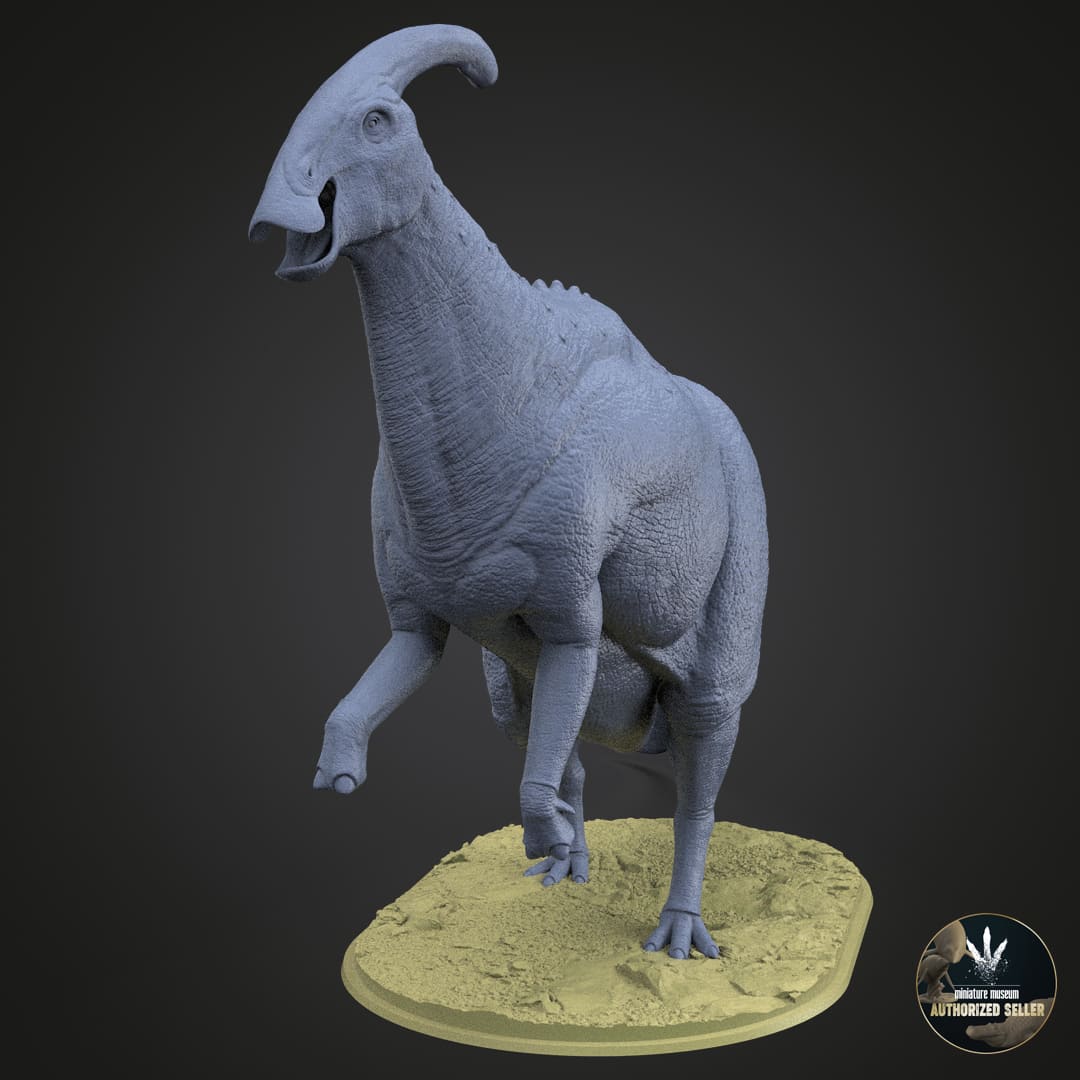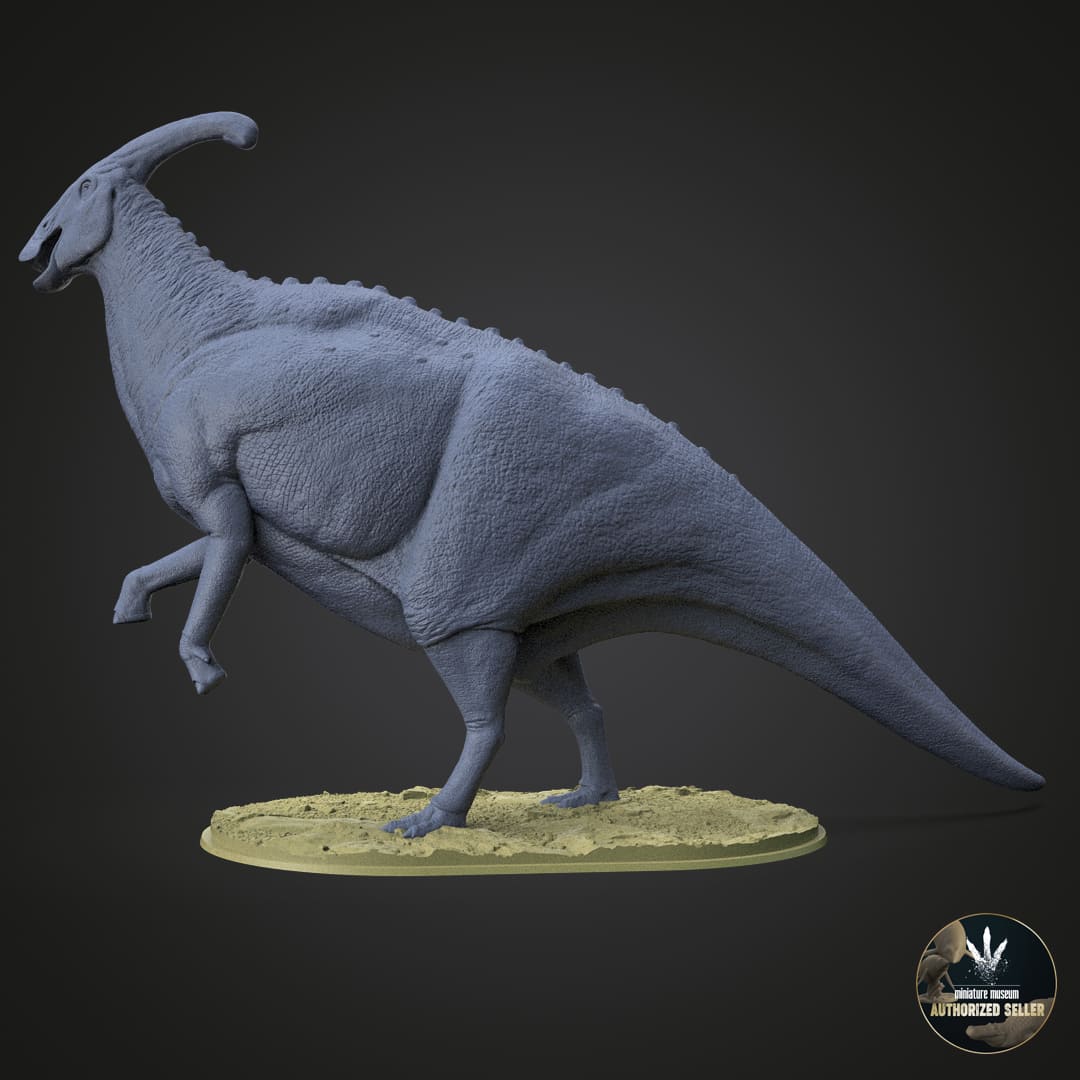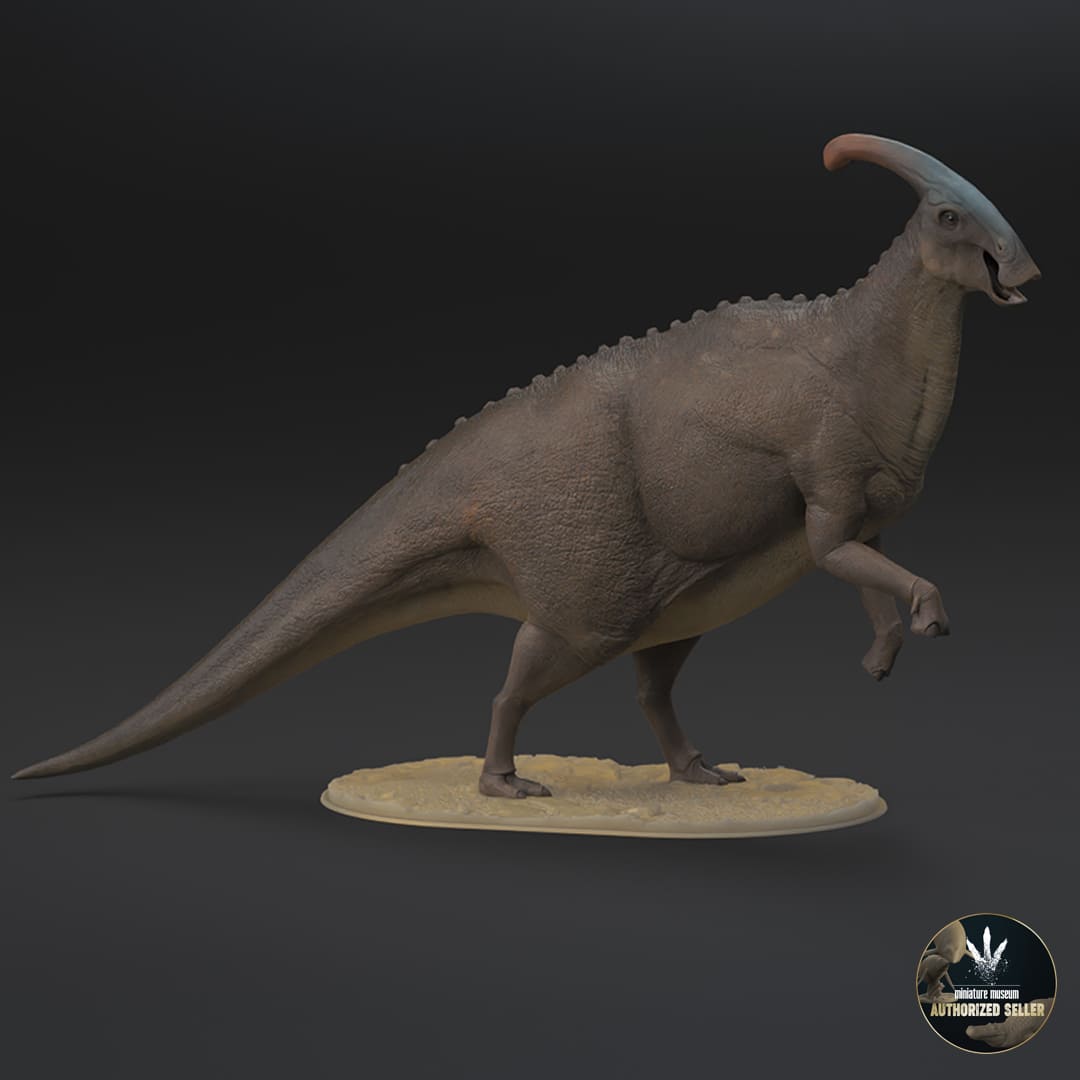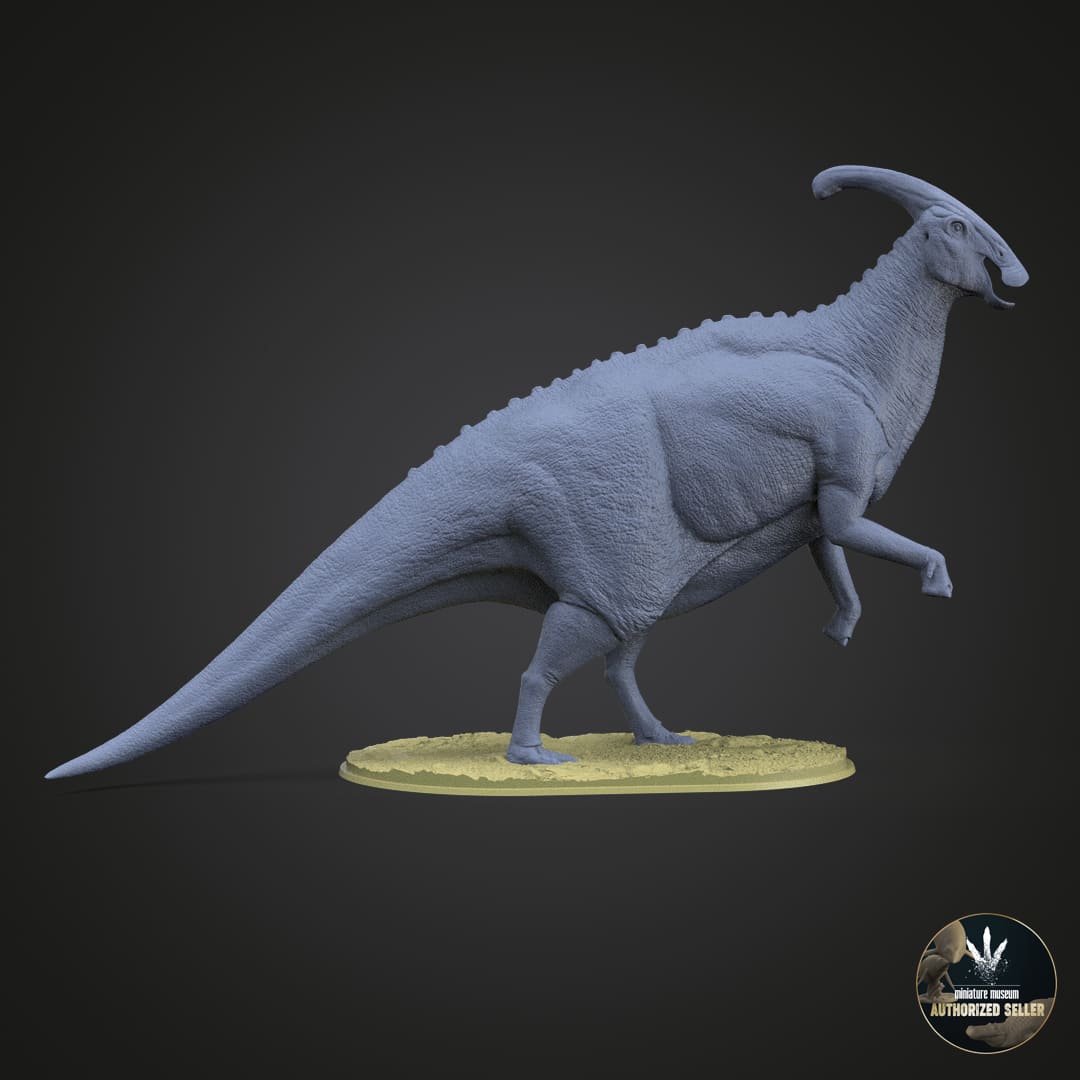




Parasaurolophus walkeri
Do you want another scale?
Contact us and we will make it possible!
How will you receive your replica?
In the unprimed and primed variants, you will receive the complete replicas except for the large models, where you will receive an assembly kit.
In the hand-painted variant, the replicas will be delivered complete.
How does the painting service work?
We created a private chat for you where you will have direct communication with our painter , being able to choose your preferred color schemes and follow the hand painting process closely.
Pairs well with

Parasaurolophus walkeri
If you have any questions, you are always welcome to contact us. We'll get back to you as soon as possible, within 24 hours on weekdays.
Shipping Information
Visit our shipping policy page to find all the information.
Customer Support
Give us a few details and we’ll offer the best solution. Connect by chat or email.
We are available 24/7.
FAQ’s
Visit our FAQ's page to find answers to common questions.
Contact Us
We'd love to hear from you. We are here to help. Visit our contact page to send us a message.
Product details
The most complete specimens of Parasaurolophus walkeri have been found primarily in Canada, specifically in the Dinosaur Park Formation in Alberta. It was a large dinosaur, with estimates suggesting that it could reach a length of approximately 9 to 10 meters and a weight ranging from 2.5 to 3.5 tons. It moved in both a quadrupedal and bipedal posture, depending on the situation; That is, it could walk on all fours while feeding and stand on its hind legs to run or interact with others of its kind.
What especially distinguishes Parasaurolophus walkeri is its hollow bony crest, which reached a length of up to 1.8 meters. Although the exact purpose of the crest has been debated for years, more recent studies suggest that it probably had multiple functions. One of the most accepted hypotheses is that the crest was used for sound communication between individuals, generating trumpet-like sounds through breathing, since the internal structure of the skull is connected to the airways. This would have allowed them to emit deep sounds, which would have been useful in social interactions or to warn of possible dangers. It has also been suggested that it could have had a visual function, acting as a sexually selective trait, or been used in thermoregulation, helping to dissipate body heat.
As an herbivore, Parasaurolophus walkeri fed mainly on low vegetation, such as leaves, branches and fruits of conifers and flowering plants. Its jaws were equipped with multiple rows of constantly renewing teeth, forming a dental battery suitable for crushing tough, fibrous plants. It is believed that it fed on a wide variety of plants thanks to its ability to process both soft and hard plant material.
The environment in which Parasaurolophus walkeri lived was dominated by rivers and river plains, with abundant vegetation including ferns, cycads and conifers. This habitat also hosted a wide range of other dinosaurs, including carnivores such as Albertosaurus and other herbivores such as Corythosaurus and Centrosaurus, suggesting that Parasaurolophus must have shared resources and possibly been on constant alert for predators.
Approximate measurements of Parasaurolophus:
- Complete 1:60 scale
- Length 140 mm
- Height 89 mm
- Width 36 mm
- Snout-tail length 167 mm
- Complete 1:35 scale
- Length 239 mm
- Height 153 mm
- Width 61 mm
- Snout-tail length 285 mm
Information about aftershocks
Collector's item ; Hyper-realistic replica, highly detailed and with a high degree of scientific precision.
Made to scale, prototyped in resin and with a scenic base in most of the models offered. If you like miniatures, both for collecting and for painting, we offer you a wide variety of scale replicas; All of them related to dinosaurs, extinct prehistoric fauna and current fauna.
So if you love dinosaurs and animals as much as we do, this is your favorite store to collect and paint them :)
We are authorized distributors of all the replicas and figures we offer. We use 3D printers with 8K - 14K resolution, and high-quality resins with additives to improve hardness and flexibility, thus offering replicas of impeccable quality.
Different scales will be used to make the replicas (depending on the size of the species), although we are open to making other suggested scales upon request as long as they fit in our printing trays, for which you will have to contact us via email and request the required size.
Replicas are supplied with the option of airbrush priming in dark grey. If you require another colour, please let us know which one you prefer in the box with special instructions for the seller. Without priming, we do not guarantee that the resin will accept paint.
We also offer the option of choosing a professionally painted replica, which is agreed upon throughout its development with the painter, through a private chat available.
Complete replica (one piece): We supply complete replicas in those models that are small, and models that are medium, large or not very bulky, will have the prerogative of being presented as a complete replica or assembly kit as the case may be.
Complete replicas will be supplied separately from their base.
Replica assembly kit: We supply replicas whose models are large, very large or bulky, only with this option.
The indicated replicas (generally composed of base, head, body and tail) will come prepared for the subsequent assembly that will be required by the client, by sanding, putty, adhesive or technique chosen by the client.
All replicas are thoroughly inspected before shipping and will be carefully packaged to prevent damage during transport.
Information about the models
The poses of the models aim to represent each character in the most scientifically viable way, thus revealing the life and customs of prehistoric and modern fauna.
Each character has its own personality and develops in different life scenarios; birth, adolescence and play, hunting, feeding, fighting, courtship, death and many other scenes from their daily life, always from the creative perspective of their designers.
Handmade
All orders are individually prepared on the cutter for subsequent prototyping, obtaining a resin part that will require post-processing by manual and ultrasonic cleaning, support removal, ultraviolet curing, labeling and packaging.

We are authorized distributors
We offer both our own physical replicas and those that have been modeled by many of the best 3D designers, in order to offer you the greatest possible variety.
Frequently Asked Questions
If you have any questions about products, orders or shipping, please read our FAQ page to learn more.
